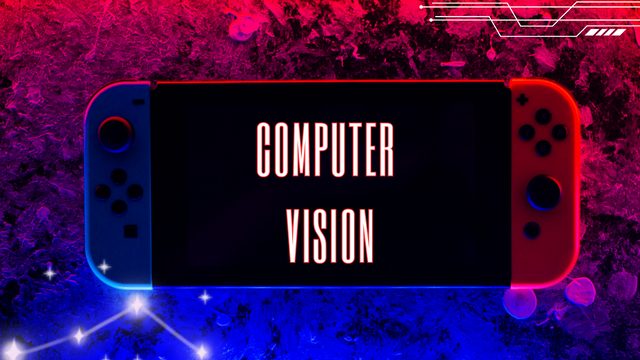
Understanding Computer Vision
Human vision is a complex and powerful sense that allows us to perceive and understand the world through visual information. Computer Vision aims to replicate this capability in machines by developing algorithms and models that can process and interpret visual data.Computer Vision involves a variety of tasks, including:
- Image Classification: Image classification involves categorizing images into predefined classes or categories. For example, a computer vision system can be trained to recognize different objects, animals, or scenes within images
- Object Detection: Object detection goes a step further than image classification. It involves not only identifying the presence of objects in an image but also drawing bounding boxes around them to localize their positions.
- Image Segmentation: Image segmentation involves partitioning an image into multiple segments or regions based on their shared characteristics. It is useful for identifying and separating different objects and regions within an image.
- Image Generation: Image generation is the process of creating new images based on existing data or learned representations. Generative models, such as Generative Adversarial Networks (GANs) and Variational Autoencoders (VAEs), are used for image generation.
- Image Captioning: Image captioning combines computer vision with natural language processing. It involves generating descriptive captions or sentences that describe the content of an image.
Computer Vision Techniques and Models
Computer Vision relies on a variety of techniques and models to process and interpret visual data. Some of the key techniques include:1- Convolutional Neural Networks (CNNs)
Convolutional Neural Networks (CNNs) are a class of deep neural networks specially designed for computer vision tasks. CNNs are composed of multiple layers, including convolutional layers, pooling layers, and fully connected layers.
Convolutional layers apply convolutional filters to the input image to extract relevant features, such as edges, textures, and shapes. Pooling layers downsample the feature maps, reducing their spatial dimensions while retaining the most important information. Fully connected layers process the extracted features and make predictions or classifications.
CNNs have demonstrated remarkable performance in tasks like image classification, object detection, and image segmentation. Their ability to automatically learn hierarchical representations of visual data has made them a cornerstone of modern computer vision systems.
2- Transfer Learning
Transfer learning is a technique that leverages pre-trained models to solve new tasks with limited data. In transfer learning, a model that has been trained on a large and diverse dataset is used as a starting point for a new task. The knowledge gained from the initial task is transferred to the new task, allowing the model to generalize better and achieve better performance even with limited data.
3- Feature Extraction
Feature extraction involves extracting relevant features from images to represent them in a more compact and meaningful manner. Traditional computer vision techniques, such as Histogram of Oriented Gradients (HOG) and Scale-Invariant Feature Transform (SIFT), are used for feature extraction. These features can then be fed into machine learning models for classification or other tasks.
4- Generative Models
Generative models, such as Generative Adversarial Networks (GANs) and Variational Autoencoders (VAEs), are used for image generation and synthesis. GANs consist of two neural networks—a generator and a discriminator—that compete against each other to produce realistic images. VAEs use an encoder-decoder architecture to learn a low-dimensional representation of images, enabling the generation of new and realistic images.
Practical Applications of Computer Vision
Computer Vision has a wide range of practical applications across various industries and domains. Some of the notable applications include:1- Autonomous Vehicles
Computer Vision plays a crucial role in the development of autonomous vehicles. Object detection and recognition algorithms, based on CNNs, enable vehicles to detect and respond to pedestrians, traffic signs, and other vehicles in their environment. Additionally, computer vision systems are used for lane detection, path planning, and obstacle avoidance.
2- Surveillance and Security
Computer Vision is widely used in surveillance and security systems. Video analytics algorithms can analyze live camera feeds to detect unusual activities, recognize individuals, and track objects of interest. These systems are employed in public spaces, airports, and other critical areas for enhancing security and safety.
3- Healthcare
Computer Vision has numerous applications in healthcare, including medical imaging analysis and diagnostics. Deep learning models are used to analyze medical images, such as X-rays, MRIs, and CT scans, for the detection of diseases and abnormalities. Computer Vision aids in early diagnosis and treatment planning, improving patient outcomes.
4- Retail and E-Commerce
Computer Vision has transformed the retail and e-commerce industry. Visual search and product recognition systems allow users to search for products using images rather than keywords. These systems enable better product recommendations, personalized shopping experiences, and improved customer engagement.
5- Augmented Reality (AR) and Virtual Reality (VR)
Computer Vision is a fundamental technology in AR and VR applications. It enables devices to recognize and track objects in the real world, allowing for immersive and interactive experiences in virtual environments.
Challenges and Future Directions
Despite the significant advancements in computer vision, several challenges remain. Handling occlusions, variations in lighting conditions, and data scarcity for specific tasks are some of the challenges that computer vision researchers continue to address. Additionally, ensuring the robustness and reliability of computer vision systems, especially in safety-critical applications like autonomous vehicles, remains a priority.In the future, research in computer vision will focus on developing more powerful and efficient algorithms, improving the interpretability of deep learning models, and advancing multimodal computer vision techniques that integrate information from different sensors, such as images and depth data.
Conclusion
Computer Vision is a transformative field within artificial intelligence, enabling machines to interpret and understand visual information. The wide range of techniques, such as CNNs, transfer learning, and generative models, has paved the way for significant advancements in image classification, object detection, image generation, and more.The practical applications of computer vision span across industries, impacting autonomous vehicles, healthcare, retail, and entertainment. As research continues and computer vision technologies evolve, we can expect further breakthroughs and innovations, making computers more capable of perceiving and understanding the visual world around us.

Comments
Post a Comment